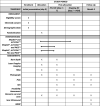Protocol for a feasibility, acceptability and safety study of the PICO device (negative pressure wound therapy) in acute paediatric burns
- PMID: 37137557
- PMCID: PMC10163492
- DOI: 10.1136/bmjopen-2022-068499
Protocol for a feasibility, acceptability and safety study of the PICO device (negative pressure wound therapy) in acute paediatric burns
Abstract
Introduction: Negative pressure wound therapy (NPWT) in acute burn care may decrease the time to re-epithelialisation by more than 20%. Despite this, the perceived burden of use; including therapeutic, physical and financial, have limited the use of NPWT in acute burn care. This might be minimised by using the small, ultraportable, single-use NPWT device PICO as opposed to larger devices, which to date has never been studied in acute burn care. This research will; therefore, primarily assess the feasibility, acceptability and safety of PICO in paediatric burns. Secondary outcomes include time to re-epithelialisation, pain, itch, cost and scar formation.
Methods and analysis: This protocol details a clinical trial methodology and is pre-results. This single site, prospective, pilot randomised controlled trial will be conducted in an Australian quaternary paediatric burns centre. Participants must be aged ≤16 years, otherwise well and managed within 24 hours of sustaining a burn that fits beneath a PICO dressing. Thirty participants will be randomised to one of three groups: group A: Mepitel and ACTICOAT, group B: Mepitel, ACTICOAT and PICO and group C: Mepitel, ACTICOAT Flex and PICO. Patient outcomes will be recorded at each dressing change to assess efficacy and safety outcomes until 3 months postburn wound re-epithelialisation. Surveys, randomisation and data storage will be undertaken via online platforms and physical data storage collated at the Centre for Children's Health Research, Brisbane, Australia. Analysis will be done by using StataSE 17.0 statistical software.
Ethics and dissemination: Ethics has been obtained from Queensland Health and Griffith Human Research Ethics committees including a site-specific approval. These data will be disseminated via clinical meetings, conference presentations and peer-reviewed journals.
Trial registration number: ACTRN12622000009718.
Keywords: clinical trials; paediatric surgery; qualitative research; statistics & research methods; surgery; wound management.
© Author(s) (or their employer(s)) 2023. Re-use permitted under CC BY-NC. No commercial re-use. See rights and permissions. Published by BMJ.
Conflict of interest statement
Competing interests: While Smith & Nephew donated a grant for this study.
Figures
Similar articles
-
The feasibility of negative pressure wound therapy versus standard dressings in paediatric hand and foot burns protocol: a pilot, single-centre, randomised control trial.Pilot Feasibility Stud. 2023 May 26;9(1):90. doi: 10.1186/s40814-023-01308-z. Pilot Feasibility Stud. 2023. PMID: 37237316 Free PMC article.
-
Study of negative pressure wound therapy as an adjunct treatment for acute burns in children (SONATA in C): protocol for a randomised controlled trial.Trials. 2019 Feb 13;20(1):130. doi: 10.1186/s13063-019-3223-9. Trials. 2019. PMID: 30760332 Free PMC article.
-
Effectiveness of a hydrogel dressing as an analgesic adjunct to first aid for the treatment of acute paediatric thermal burn injuries: study protocol for a randomised controlled trial.Trials. 2019 Jan 6;20(1):13. doi: 10.1186/s13063-018-3057-x. Trials. 2019. PMID: 30612585 Free PMC article.
-
The efficacy and safety of negative pressure wound therapy in paediatric burns: a systematic review and meta-analysis of randomized controlled trials.BMC Pediatr. 2024 Dec 18;24(1):807. doi: 10.1186/s12887-024-05302-z. BMC Pediatr. 2024. PMID: 39696096 Free PMC article.
-
Negative pressure wound therapy for surgical wounds healing by primary closure.Cochrane Database Syst Rev. 2020 May 1;5(5):CD009261. doi: 10.1002/14651858.CD009261.pub5. Cochrane Database Syst Rev. 2020. Update in: Cochrane Database Syst Rev. 2020 Jun 15;6:CD009261. doi: 10.1002/14651858.CD009261.pub6. PMID: 32356396 Free PMC article. Updated.
Cited by
-
Pediatric Burn Treatment with Non-Thermal Atmospheric Plasma and Epifast®: Clinical Results.Eur Burn J. 2025 Apr 14;6(2):20. doi: 10.3390/ebj6020020. Eur Burn J. 2025. PMID: 40265375 Free PMC article.
References
-
- Health AIo, Welfare . Australia’s children. Canberra: AIHW, 2022.
-
- Peden M, Oyegbite K, Ozanne-Smith J. World report on child injury prevention. Albany, SWITZERLAND: World Health Organization, 2008. - PubMed
Publication types
MeSH terms
Substances
Associated data
LinkOut - more resources
Full Text Sources
Medical
Research Materials

